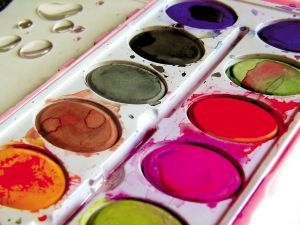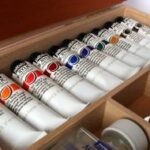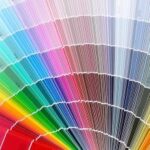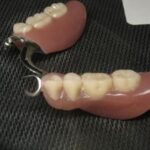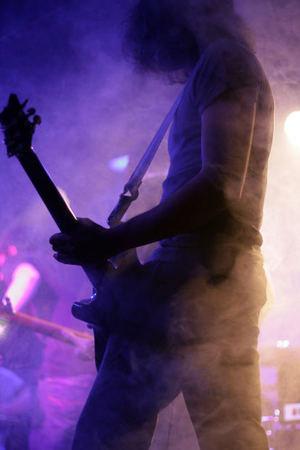The most important technique for a watercolor artist to learn is how to apply a wash in watercolor painting.
A wash provides a background color for the watercolor, or a partial background color. The wash is made up of watercolor paint that is diluted with water.
Different Types of Watercolor Washes
Pale Wash – A watercolor wash can be a very subtle, almost tinting of the watercolor paper. Very little pigment is used, in comparison the amount of water applied to the paper. Using a pale wash or tinting, can provide an atmosphere to the watercolor painting. It can also provide a cohesive hue to the final image.
Solid Wash – Another type of wash for watercolor paintings is a solid wash. A solid wash can also be a pale wash. A solid wash is when the entire sheet of watercolor paper is painted one, solid and uniform color and shade. The wash is the same shade at the top, the center and the bottom of the paper.
Gradient Wash – A gradient wash provides an ideal background wash for landscape watercolor paintings. A gradient wash typically moves from dark to light. The dark to light is achieved by starting at the top the watercolor paper, and moving down, with lessening color.
A gradient wash, although created from top to bottom, does not limit the final watercolor painting. The gradient wash may be created from top to bottom, but the watercolor artist may use the paper upside down, or change the orientation from horizontal to vertical, to show side lighting.
Layered Wash – A layered wash is a more advanced wash that involved using more than one pigment, or paint color. A layered wash can be achieved by using different hues in the same color family, like blues, or grays. A layered wash can also be achieved by using different colors to achieved a glazed effect.
Color Mix Wash – A color mix wash is made by using two or more pigment colors, and is an advanced method for creating a wash. By using more than one color in the wash, the background will be a unique blend of colors that cannot be achieved when the colors are mixed on a palette and applied after the mixing.
Supplies Needed to Apply a Wash in Watercolor Painting
masking tape
a flat surface that can be tilted (a drawing board, a drafting table, the back of a large watercolor pad, or a piece of cardboard)
watercolor paint
watercolor paper
a source of clean water (without watercolor pigment)
a large round brush OR a wide, flat brush
How to Apply a Wash Technique in Watercolor Painting
Preapre the Paper
The watercolor paper needs to be taped down to a flat and tilt-able surface. For this reason, use a piece of watercolor paper that is larger than your intended final image. Tape down the watercolor paper tightly on all four sides of the paper. This is to keep the paper from buckling.
It’s best to use a surface that you can easily move and tilt, like a drawing board, or painting clipboard.
The most important aspect of making a successful wash in watercolor painting is to prepare enough paint. Do not underestimate the absorption factor of the watercolor paper. The wash will not be uniform or look right if you have to stop to mix more paint, and then go back to creating a wash.
Find a way to slightly tilt the watercolor paper and its support.
Pick a color and mix the paint with water. Use a large container, so that you have enough. Watercolor paint stretches a long way, so it is better to make too much of a wash than too little.
Applying the Paint
Applying a wash to watercolor paper does take some practice. The artist needs to use a light hand, and let the water do most of the work. Asuccessful watercolor wash also requires the artist to work fast. Your watercolor technique may be slow and methodical, but you will need to speed it in order to create a solid wash.
Using a round brush or a wide flat brush, soak the brush in the mixed paint. The type of brush is up to you. Both can create successful washes. Find the brush that is easiest for you to use.
Start at the top of the page and gently drag the brush across the top of the page. The top of the page will have the beginning of the wash, and the makings for the next row of paint.
Quickly drag the brush across the bottom of the row of paint you just created. Continue down the paper, keeping the brush loaded with paint.
It will take some time to work on the exact speed, angle of the paper, and amount of paint to put on the brush.
A successful wash will be streak-free and uniform.
Variations of the solid wash include the gradient wash, a layered wash, and a color mix wash. To apply a gradient wash, use a water filled, not paint filled brush about 1/3 of the way down the paper. For a layered wash, let the wash dry before applying another wash in a different color. Use different colors to make a color mix wash.
Remove the tape when the paint is dry. Now work on the washed background to create your watercolor painting.
